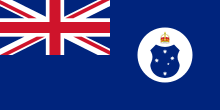Queen's Regiment
The Queen's Regiment was an infantry regiment of the British Army formed in 1966 through the amalgamation of the four regiments of the Home Counties Brigade. In turn, the regiment became part of Princess of Wales's Royal Regiment in a further amalgamation with the Royal Hampshire Regiment in 1992.
| Queen's Regiment | |
|---|---|
 | |
| Active | 31 December 1966 – 9 September 1992 |
| Country | |
| Branch | |
| Type | Line Infantry |
| Role | 1st Battalion 2nd Battalion 3rd Battalion 4th Battalion 5th Battalion – TA Reserve 6th Battalion – TA Reserve 7th Battalion – TA Reserve 8th Battalion – TA Reserve |
| Size | Four regular battalions Four territorial battalions |
| Part of | Queen's Division |
| Motto(s) | Unconquered I Serve |
| March | Quick – Soldiers of the Queen Slow – The Caledonian |
| Anniversaries | Sobraon (10 February), Albuhera (16 May), Glorious First of June, Sevastopol (8 September), Salerno (9 September), Quebec (13 September), British Battalion Day (20 December) |
| Commanders | |
| Colonel in Chief | HM Queen Margrethe II of Denmark |
History
The regiment was formed as a 'large regiment' on 31 December 1966 by the amalgamation of the four remaining regiments of the Home Counties Brigade as a consequence of the Defence Review of 1957. The four regiments formed four battalions, retaining their previous names in the titles. These were:[1]
- 1st Battalion (Queen's Surreys) – formerly the Queen's Royal Surrey Regiment (2nd, 31st & 70th Regiments of Foot).
- 2nd Battalion (Queen's Own Buffs) – formerly Queen's Own Buffs, The Royal Kent Regiment (3rd, 50th & 97th Regiments of Foot).
- 3rd Battalion (Royal Sussex) – formerly the Royal Sussex Regiment (35th & 107th Regiments of Foot).
- 4th Battalion (Middlesex) – formerly the Middlesex Regiment (Duke of Cambridge's Own) (57th & 77th Regiments of Foot).
On 1 July 1968 the battalions discarded their previous regimental identification when the subtitles were omitted.[2] Four battalions of Territorial troops were formed in the following decades:
- 5th (Volunteer) Battalion, a TAVR II (Territorial and Army Volunteer Reserve) unit, formed in 1967 to be employed for use with NATO forces in West Germany during tense times in the Cold War.
- 6th (Volunteer) and 7th (Volunteer) Battalions were formed in 1971 with headquarters at Wandsworth and Horsham respectively. On 1 April 1975 these two battalions combined to form the 6th/7th (Volunteer) Battalion, The Queen's Regiment.[2]
- 8th (Volunteer) Battalion was formed as TAVR III unit at Tonbridge in 1967 but disbanded in 1971.[2] It was re-formed as the 8th (Volunteer) Battalion, Queen's Fusiliers (City of London) on 16 May 1988 as a composite battalion composed of the Queen's Regiment and the Royal Regiment of Fusiliers.[2] A & B Companies were badged as Queen's Regiment, C Company as RRF, and HQ Company was a mixture. HQ was at St John's Hill. Shoulder titles for all companies read Queen's Fusiliers. In 1992, the London Scottish and London Irish Rifles were removed from 1st Battalion, 51st Highland Regiment and 4th Battalion, Royal Irish Rangers and became companies of 8QF. In 1993 8QF was retitled the London Regiment with the disbandment of the existing A (Middlesex) Company.[3]
Operational deployments
The deployment of the regiment's battalions was primarily to Northern Ireland during The Troubles, taking part in anti-terrorist operations. The 1st Battalion was almost continuously deployed there between August 1969 and November 1976.[4]
In 1970 the 1st Battalion joined the Berlin Brigade in West Berlin, a small enclave in Communist-controlled East Germany, leaving in 1972.[4] In October 1972 the 2nd Battalion arrived in Cyprus as part of the United Nations Peacekeeping Force in Cyprus (UNIFICYP), a force intended to prevent conflict from breaking out between Greek and Turkish Cypriots: the battalion returned to the United Kingdom in May 1973.[4] The 4th Battalion was disbanded that year, as with every other 'junior' battalion of the new large regiments.[4] Also that year, the 3rd Battalion arrived in Gibraltar where it remained with the garrison for almost two years.[4] In 1977 the 2nd Battalion arrived in Gibraltar and the 3rd Battalion arrived in Belize, then a British territory, as part of the garrison there to protect it from the perceived threat of war with Guatemala, a neighbour of Belize, which was making claims that it believed Belize to be an integral part of Guatemala.[4]
By 1975 the 1st Battalion had arrived in Werl, Germany (replacing the 2nd Battalion – who had moved from Werl back to Bulford Camp in the United Kingdom) from where they did operational tours in Ulster, in the area of Londonderry in 1976, and West Belfast in 1978.[4] The 2nd Battalion had preceded it to Ulster, first on a spearhead deployment in South Armagh following the Kingsmill (Bessbrook) massacre in January 1975, and then to West Belfast, on an operational tour in Andersonstown in early 1977.[4]
The 1st Battalion moved to Canterbury (the regiment's home base) in 1980.[4] From there it undertook a six-month tour of Belize before deploying in November 1982 to Omagh in County Tyrone.[4] It served there until January 1985 with south east Fermanagh as its primary focus.[4] During this period all three battalions served in Ulster – 2. Queen's in Londonderry, also on a two-year tour, and 3. Queen's in Belfast on a six-month tour. A freedom parade was held in Belfast in 1984 at which all three battalions' Regimental Colours were paraded. In 1985 the battalion moved to Gibraltar for two years before returning to the United Kingdom (Tidworth) in 1987 where it was to remain until 1990.[4] During this period it undertook two 6-month tours of Ulster – South Armagh in 1987 and Belfast in 1989/90.[4] In 1990 the battalion moved to Minden in Germany, where it disbanded in 1992.[4]
In late 1981 the 2nd Battalion deployed to Cyprus on a 6-month tour-of-duty with UN forces.[4] In 1985 the 1st Battalion arrived in Gibraltar on a 2-year posting and the following year the 3rd Battalion deployed to Belize on a 6-month tour-of-duty as well as West Belfast on a 6-month tour-of-duty before deploying to Aldergrove, Northern Ireland for a 2-year operational tour.[4] In 1990 the 3rd Battalion arrived in Cyprus—its last deployment abroad and the location of its disbandment in 1992.[4] The 2nd Battalion's last deployment was to Northern Ireland in 1992 before heading to Canterbury, England where it disbanded later in the year.[4]
Amalgamation
As a consequence of the Options for Change defence cuts, on 9 September 1992 the regiment was amalgamated with the Royal Hampshire Regiment to form the Princess of Wales's Royal Regiment (Queen's and Royal Hampshires).[2]
Regimental museum
The Queen's & Princess of Wales's Royal Regiment Regimental Museum is at Dover Castle.[5]
Colonels-in-Chief
Colonel-in-Chiefs were as follows:[2]
- Queen Juliana of the Netherlands
- King Frederick IX of Denmark (died 1972)
- Margrethe II (from 1972)
- Princess Marina, Duchess of Kent
Regimental Colonels
Regimental Colonels were as follows:[2]
- 1966–1973: Lt-Gen. Sir Richard Craddock, KBE, CB, DSO (from Queen's Own Buffs, The Royal Kent Regiment)
- 1973–1977: Maj-Gen. Fergus Alan Humphrey Ling, CB, CBE, DSO
- 1977–1984: Maj-Gen. Rowland Spencer Noel Mans, CBE
- 1984–1989: Brig. Herbert Charles Millman, OBE
- 1989–1992: Maj-Gen. Michael Frank Reynolds, CB
Alliances
Alliances arranged were as follows:[2]
.svg.png)
.svg.png)
.svg.png)
.svg.png)
.svg.png)
.svg.png)
.svg.png)
.svg.png)
.svg.png)





Order of precedence
| Preceded by Royal Scots |
Infantry Order of Precedence | Succeeded by The King's Own Royal Border Regiment |
Lineage
| Lineage | |||
| The Queen's Regiment | The Queen's Royal Surrey Regiment | ||
| The Queen's Own Buffs, The Royal Kent Regiment | |||
| The Royal Sussex Regiment | |||
| The Middlesex Regiment | |||
References
- "The Queen's Regiment 1966 - 1992". Queen's Royal Surreys. Retrieved 13 January 2020.
- "The Queen's Regiment". Regiments.org. Archived from the original on 10 February 2006. Retrieved 20 July 2016.
- "The London Regiment". Regiments.org. Archived from the original on February 9, 2006. Retrieved 20 July 2016.
- "The Queen's Regiment". British Army units 1945 on. Retrieved 20 July 2016.
- "Queen's & PWRR Regiment Museum". 1st Battalion the Queen’s Regiment. Retrieved 5 June 2018.
External links
| Wikimedia Commons has media related to The Queen's Regiment. |
- 1st Battalion – The Queen's Royal Surrey Regiment (PWRR Princess of Wales's Royal Regiment) – Timeline
- 1st Battalion The Queen's Regiment
- 1st Battalion Royal Sussex Regiment / 3rd Battalion The Queen's Regiment
- Horsham Branch of The Queen's Regimental Association
- The Queen's Regimental Association RHQ Website
- 6/7th Battalion The Queen's Regiment
- HET report into QR soldiers death